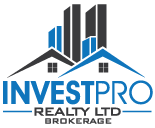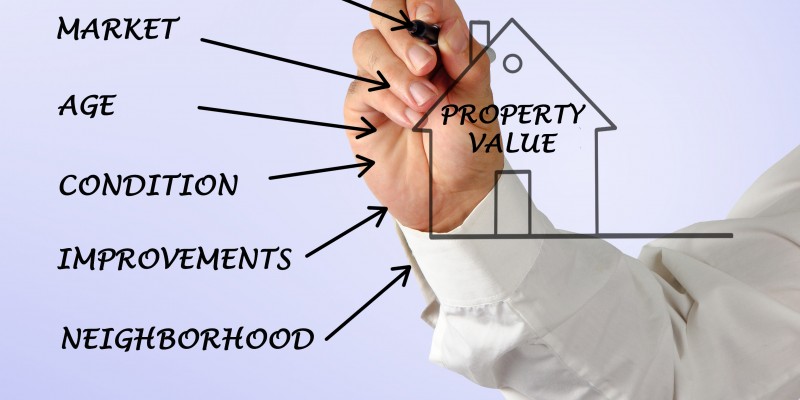Understanding Real Estate Investments Terms and Formulas
In this exciting world of Real Estate Investments there are many terms and formulas often used by investors and lenders. As a wise investor you should be familiar with this Real Estate lingo.
The following are some of the most popular and important terms and formulas;
Capitalization Rate: This is the most important term in the industry and investors should be prepared to use it to determine value. Sometimes known as the “Cap Rate”, this term represents the percentage return on investment in an “all cash purchase”. This is accomplished by using the Net Operating Income and dividing by the current market Cap Rate.
For example, suppose you have purchased an apartment building which generates a net operating income of $60,000; and assuming the purchase price of this property was $600,000; you purchased the property at a 10% Cap Rate. In other words you will earn a 10% return on the $600,000 investment.
Net Operating Income 60,000.00
= 10% Cap Rate
Purchase Price 600,000.00
Divide the Net Income by the Selling Price.
The market Cap Rate should be the key indicator to determine the value of investment properties. The Cap Rate will fluctuate with the market forces of supply, demand, interest rates and political climate.
Gross Rent Multiplier (GRM) When we purchase a Real Estate investment, we are really buying the potential rental income, and not just the bricks and mortar. Therefore the Gross rents are sometimes used to determine value.
The GRM is what you get by dividing the gross rent into the sale price of a building. For example, if an investment property sells for $1,000,000.00 with gross rents of $250,000.00, the “Multiplier” is 4 time the gross income. Therefore the GRM in this scenario is 4. This number can be a good thumbnail approach to valuing other buildings when you know their gross income.
The problem with this method of valuing buildings is that the gross income does not allow for fluctuations in expenses. The best example would be in comparing two identical buildings, where;
On the first building, the tenants pay for own hydro
On the second building, the owner pays hydro and for cable etc.
The impact on the value where the owner pays extra expenses will be significantly lower, unless the rents are adjusted higher to compensate for the inclusions. The GRM (Gross Income Multiplier) may be used as a benchmark, however amongst experienced investors the best approach to valuing buildings is by using the capitalization of the net operating income.
Effective Gross Income This refers to the actual gross rents and deducting allowance for vacancy and bad debt. Every rental property experiences tenant turnover. The frequency in which it occurs will depend on many factors such as; location, condition, rental charge, economic forces, tenant profile (age, etc.), and property management experience, etc. It is very important that you become familiar with the vacancy rate of the area of the subject property and also the track record of the property turnover rate
Net Operating Income (N.O.I) The Net Operating Income is the amount of cash available after deducting the operating expenses from the Effective Gross Income. Be sure that the N.O.I. is accurate so that a realistic property value can be assessed. To obtain a true N.O.I, you must also include management fees, superintendent wages to the expenses. Do not be fooled by a lean expense ratio, to artificially show a higher net income. Always remember that it is the N.O.I. that sets the probable value of the building.
Operating Expenses As an apartment building specialist, I come across many financial reports and proformas, and it never ceases to amaze me how many operating expenses are “streamlined” to expand the “N.O.I.”, thus artificially increasing the market value of the property. In addition to expenses for heat, hydro, water, realty taxes, the next time you review an income statement, also look for the following expenses:
1. Management Fees Whether you intend to manage yourself or hire a property manager, this item should always be expensed at 3% to 5% of the gross income
2. Superintendent/Janitor Wages Again, whether or not you intend to do the work yourself, always expense this wage to determine the true operating expenses. Use approximately $20.00 to $30.00 per unit per month as a guideline.
3. Maintenance/Repairs This cost will vary depending on the type, age and condition of the property, as well as quality of tenants and the past maintenance level of the building. A good guideline is approximately $500.00 to $800.00 per unit per year.
4. Elevator Often the cost of the elevator maintenance are not included in statements.
5. Waste Disposal Garbage disposal charges are often missed on a financial statement.
6. Snow Removal Often the cost of snow clearing are not included in statements
7. Insurance Coverage The property must be insured for fire and other hazards (tenants should cover their own contents). Premiums will vary depending on age and size of the building and be aware that premiums are on the rise.
8. Laundry Expenses On many occasions, you will find the laundry income included in the gross revenues. However, the laundry rentals are often forgotten in the expense column and unless the laundry equipment is owned, look for rental charges of approximately $60.00 a pair per month.
9. Advertising/Promotions, etc. In a tough rental market, you must allocate a reasonable monthly charge for advertising or costly promotions. However, we now have the option to use free internet advertising, which are becoming more and more cost effective for the landlord.
A good “rule of thumb” for operating expenses is 55% to 60% of the “Effective Gross Income”. There are always minor exceptions where income is higher (and expenses lower) because tenants pay for their own hydro.
Leverage The huge advantage of using leverage in a real estate investment is that for a small amount of cash you can purchase a large property. For example, a $100,000.00 down payment can purchase a building worth as much as $1,000,000.00, (10% down payment).On a long term hold, you will benefit from both mortgage reduction and increase in value.
With leverage you may run the risk of unexpected negative cash flow that could risk the investment. Assure the income generated from the property is able to support the expenses and carrying costs. Also be aware of unforeseen capital expenditures which may tremendously impact the cash flow. Remember that “cash flow is king”, and unless you have deep pockets, always leave a good cash reserve available when required.
Debt Service Ratio Used by lenders to establish the maximum loan amount. As an example, let us suppose the Net Operating Income (NOI) is $100,000.00 and assuming the “Debt Service Ratio” used by the Lender is 1.2 then the following steps will determine the maximum loan amount.
1. – Divide the NOI by the “Debt Service Ratio” ($100,000.00 / 1.2 = $83,333)
2. – Divide by 12 months ($83,333/ 12 = $6,944)
3. – Assuming the monthly interest rate factor @ 6% is 0.00644
4. – Divide interest rate factor into monthly payment of $6,944.00 ($6,944 /.00644 = $1,078,260
Therefore the maximum loan amount will be rounded to approximately $1,080,000.00. This will provide a good guideline as you shop for a mortgage.
As a wise investor, you must learn the real estate language and know all the important formulas in order to be successful and reduce risk.

